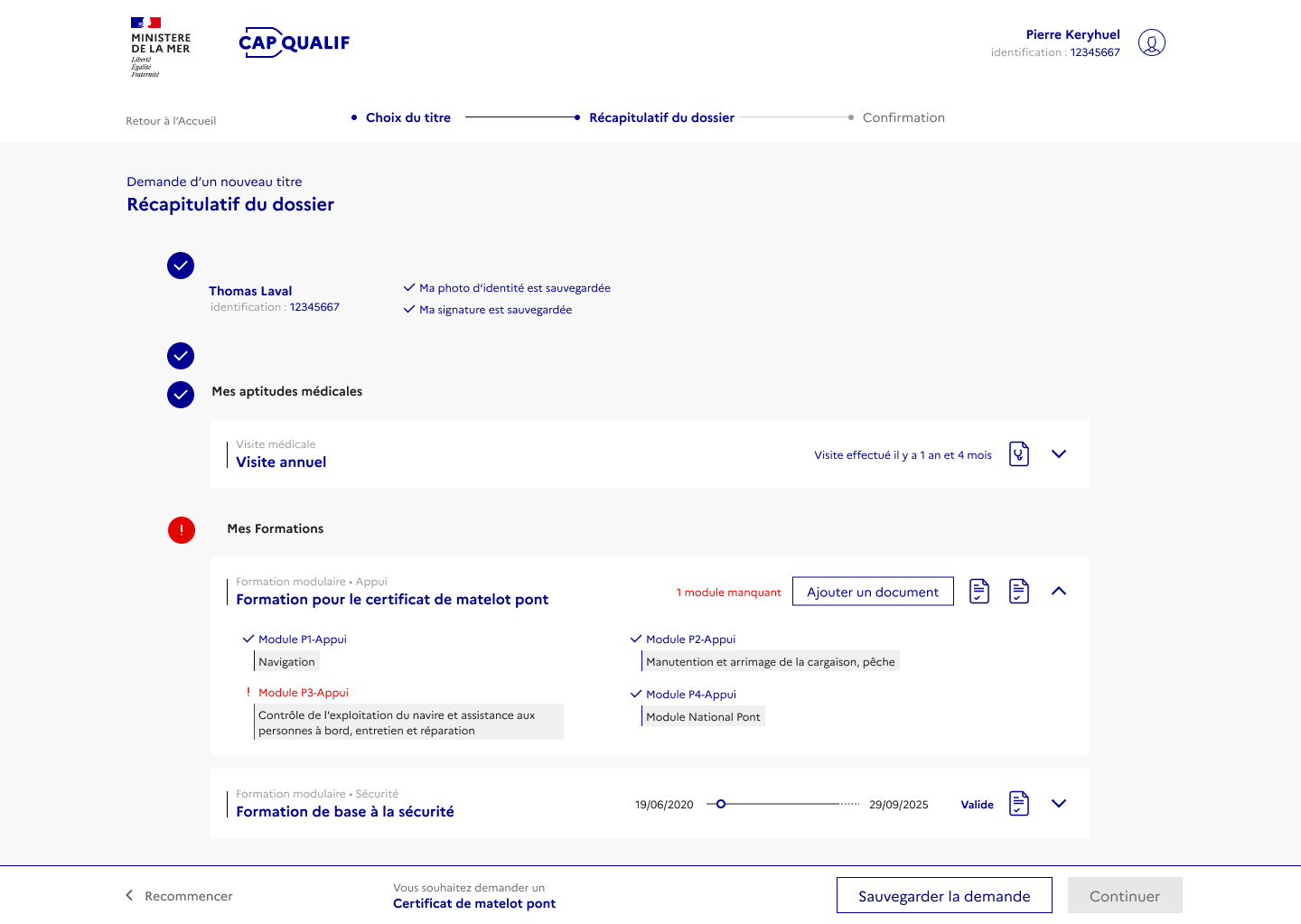Onboarding an administration
How I got Involved ?
In 2020, I had the opportunity to join an innovation program initiated by the French Digital Direction (DINUM). The program aimed to bring together designers, developers, and data scientists with government administrations seeking to accelerate the resolution of complex issues. I joined the Maritime Affairs Administration, a part of the Ministry of the Sea, along with another developer named Elisabeth Fainstain.
What were my goals ?
The initial brief was quite broad. In this work case I will only dive in the first part of the challenge that involved digitizing the request process for professional seafarers' titles. My priorities were as follows:
- Explore : Create initial drafts of solutions to inspire stakeholders and learn from their feedback.
- Frame and Define : Based on the feedback and insights gained, determine what the minimum viable product (MVP) will be and deliver the first iteration.
- Ignite a Product : Adopt a product approach with iterative development and regular user testing.
Understanding the context
Conducting Field Research
To better understand the existing procedures from both the agent and seafarer perspectives, I conducted a short field research. This involved meeting with agents who process title requests and observing their work environment through shadowing sessions and interviews. Although I didn't have the opportunity to meet any seafarers at that point, I gained insights into their profiles through the stories shared by the agents.
Discoveries and Insights
During our research, we discovered the diverse profiles of the agents and how different teams across France had varying approaches depending on regional specificities. We also understood the challenges they faced, including heavy workloads and concerns about being overlooked during the digitalization process. Despite these challenges, the agents expressed satisfaction with the level of collaboration, despite the complexities and blockers they encountered in their daily work.








